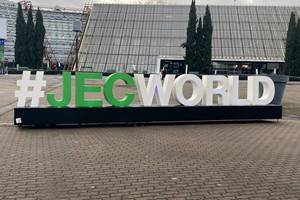Gardner Business Index at 49.7 in October
Employment is up and composites in the US electronics industry continue a 2016 growth trend.
With a reading of 49.7, the Gardner Business Index, in October, showed that the US composites industry had contracted, but did so at a very slow rate. Further, this was the first month the industry had shown contraction in the last half of 2016 since July.
The new orders subindex was just below вА®the 50 mark, indicating new orders contracted вА®in October after growing in the previous вА®three months. The production subindex,вА® however, increased for the third month in a вА®row. During the previous three months, the вА®production subindex had been at or near its вА®highest level since early 2015. Meanwhile, theвА® backlog subindex in October showed contraction again, as it had every month but one thus вА®far in пШЇпШє2016. Backlogs were the primary reason вА®that the overall index was not higher in пШЇпШєпЫЬ 2016пШЊ.вА®However, the backlog subindex seemed toвА®have bottomed out in August пШЇпШєпЫЬ2015пШљ. Employment increased for the third month in a row. Exports were virtually flat for the second time in four months. The export subindex, by October, had clearly trended up since November 2015пШЇпШєпЫЬпШљ. And supplier deliveries shortened for the first time since July пШЇпШє2016пЫЬпШЊ and for only the fourth time since the GBI was first published in December пШЇпШєпЫЬ2011пЫЬ.
In October, material prices continued an upturn begun in February. But rate of increase, which peaked in August, decelerated in August and September. Prices received were unchanged in October, after its subindex had trended upward since January. The future business expectations subindex had been dropping the previous two months, but the level of the subindex remained, in October, about average for the year.
In terms of US markets served, the automotive industry contracted at its fastest rate in October since January. Since October пШЇ2015пШєпЫЬпШљ, the automotive subindex had been above пШљ50пШє in only one month. The aerospace industry, in October, contracted for the second month in a row. September and October were the two weakest months for the aerospace subindex since January. Meanwhile, the electronics industry grew at its fastest rate in at least the previous пШЇ24пШЉ months. As October closed out, that subindex had shown contraction in only one month during пШЇ2016пШєпЫЬпШЊ.
Regionally, the Western US grew at the fastest rate in October. The region had expanded two of the preceding three months as its subindex improved substantially after bottoming in June. The only other region to grow in October was the North Central-East, which had grown for three consecutive months. The North Central-West contracted slightly after growing in September. Also, the Southeast recorded a minimal contraction after several months of strong growth. The subindex for the Northeast had trended down since February, contracting in three of the previous four months. The South Central had contracted most of the past year.
Moving on to the manufacturers, facilities with more than пШЇ250пШљпШє employees were flat in October, although their subindex was notably higher in the preceding three months. The subindex for plants with пЫЬпШє100пШє-пШЇпШЉ249пЩБ employees was at its highest since December пШЇпШє2014пЫЬпШЉ, and had grown in seven of the previous пЫЬ10пШє months. Fabricators withпШљпШє-пЩБ50-99пЩБ employees also had performed well recently, contracting only twice since February. Smaller companies in пШЇпШє2016пЫЬпШЊ had mostly contracted, but conditions for them in October seemed to be improving.
Related Content
JEC World 2024 highlights: Glass fiber recycling, biocomposites and more
CW technical editor Hannah Mason discusses trends seen at this year’s JEC World trade show, including sustainability-focused technologies and commitments, the Paris Olympics amongst other topics.
Read MoreTPI manufactures all-composite Kenworth SuperTruck 2 cab
Class 8 diesel truck, now with a 20% lighter cab, achieves 136% freight efficiency improvement.
Read MoreSMC composites progress BinC solar electric vehicles
In an interview with one of Aptera’s co-founders, CW sheds light on the inspiration behind the crowd-funded solar electric vehicle, its body in carbon (BinC) and how composite materials are playing a role in its design.
Read MoreASCEND program completion: Transforming the U.K.'s high-rate composites manufacturing capability
GKN Aerospace, McLaren Automotive and U.K. partners chart the final chapter of the 4-year, £39.6 million ASCEND program, which accomplished significant progress in high-rate production, Industry 4.0 and sustainable composites manufacturing.
Read MoreRead Next
Ultrasonic welding for in-space manufacturing of CFRTP
Agile Ultrasonics and NASA trial robotic-compatible carbon fiber-reinforced thermoplastic ultrasonic welding technology for space structures.
Read MoreCutting 100 pounds, certification time for the X-59 nose cone
Swift Engineering used HyperX software to remove 100 pounds from 38-foot graphite/epoxy cored nose cone for X-59 supersonic aircraft.
Read MoreScaling up, optimizing the flax fiber composite camper
Greenlander’s Sherpa RV cab, which is largely constructed from flax fiber/bio-epoxy sandwich panels, nears commercial production readiness and next-generation scale-up.
Read More.JPG;width=70;height=70;mode=crop)









